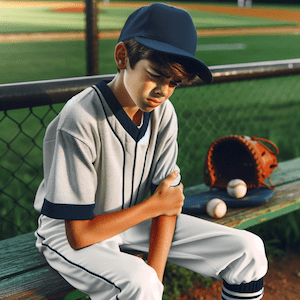What Causes Arm Pain?
Various factors, including sports injuries, work-related injuries, and repetitive overuse, can cause arm pain. The causes of arm pain can be broadly categorised by region and structure, such as neck pain, shoulder pain, elbow pain, wrist pain, hand pain, arthritis, bursitis, ligament injury, muscle pain, tendinopathy, and more.
It can be a local injury, musculoskeletal injury, or even referred from nerves in your neck.
What are the Most Common Causes of Arm Pain?
The most common sources of arm pain include shoulder, wrist, and elbow pain.
Rotator cuff injuries or frozen shoulder often cause shoulder pain, while tennis elbow or golfer’s elbow commonly cause pain. Wrist and hand pain can be related to carpal tunnel, wrist arthritis, or de Quervain’s tenosynovitis. Referred arm pain from cervical radiculopathy can also occur.
Why's it Important to Seek Professional Assessment and Prompt Treatment for Arm Pain?
It’s essential to seek a professional assessment from a health practitioner skilled in spinal and local-origin injuries to ensure an accurate diagnosis and prompt treatment directed at the arm pain source. Left-arm pain can be an early sign of a life-threatening cardiac issue, so seeking immediate medical attention is vital if you experience this symptom.
Fortunately, medical or physiotherapy intervention can respond very favourably to most arm pain when seeking early professional assessment and treatment. Healthcare practitioners may recommend common therapies such as physiotherapy, medical care, or other interventions.
Causes of Arm Pain by Region
Causes of Arm Pain by Structure
- Arthritis
- Bursitis
- Ligament Injury
- Muscle Pain
- Tendinopathy (Tendinitis-Tendinopathy-Tendinosis)
Neck-Related Arm Pain
Shoulder-Related Arm Pain
- AC Joint Injury
- Biceps Tendinopathy
- Broken Shoulder - Fractured Humerus
- Bursitis Shoulder
- Dislocated Shoulder
- Frozen Shoulder
- Rotator Cuff Calcific Tendinopathy
- Rotator Cuff Syndrome
- Rotator Cuff Tear
- Shoulder Arthritis
- Shoulder Impingement
- Shoulder Tendinopathy
- Swimmer's Shoulder
Elbow-Related Arm Pain
Wrist-Related Arm Pain
Hand-Related Arm Pain
Muscle-Related Arm Pain
- Cramps
- DOMS - Delayed Onset Muscle Soreness
- Muscle Strain (Muscle Pain)
- RSI - Repetitive Strain Injury
- Overuse Injuries









